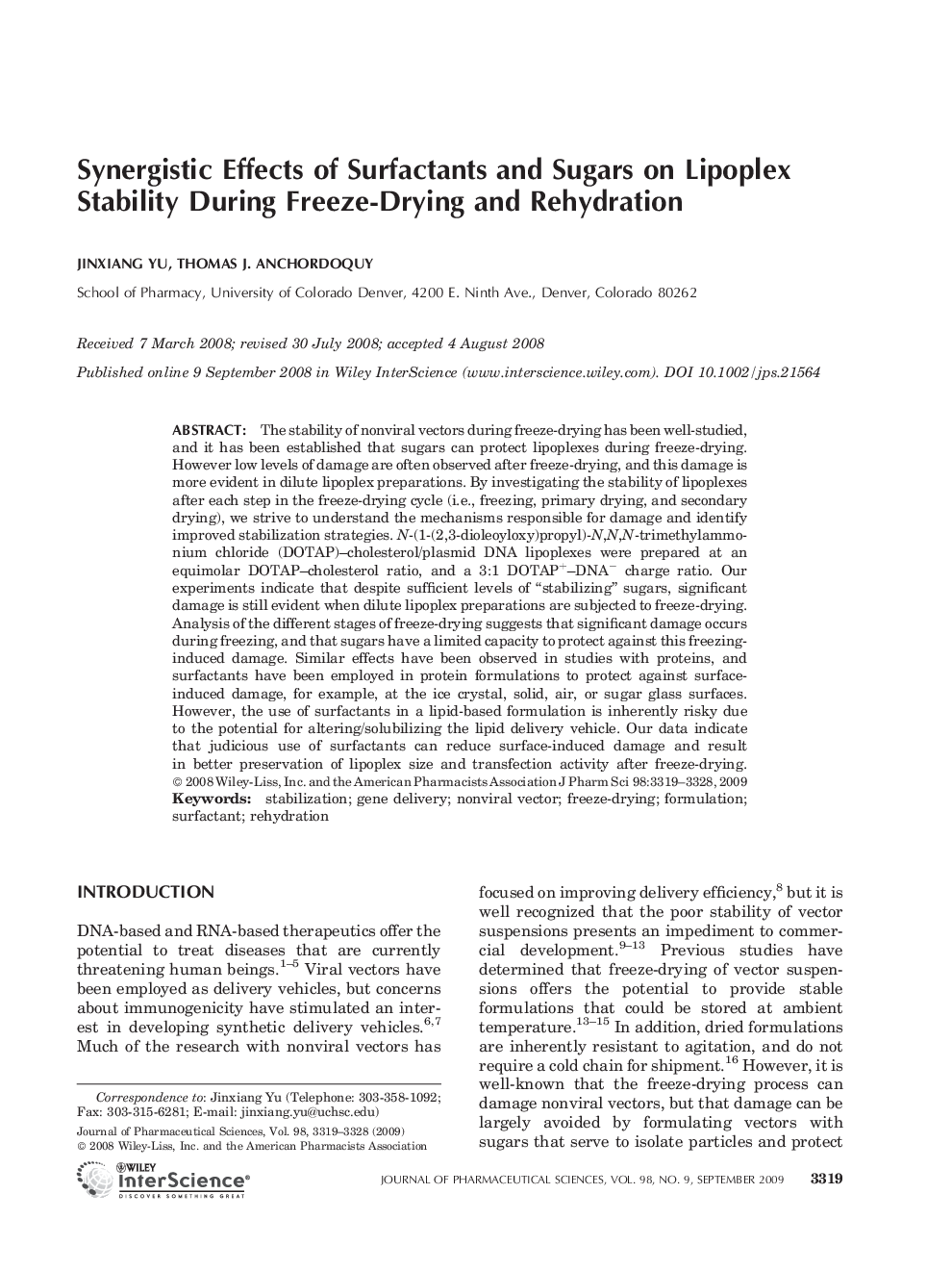| کد مقاله | کد نشریه | سال انتشار | مقاله انگلیسی | نسخه تمام متن |
|---|---|---|---|---|
| 2486840 | 1114395 | 2009 | 10 صفحه PDF | دانلود رایگان |

The stability of nonviral vectors during freeze-drying has been well-studied, and it has been established that sugars can protect lipoplexes during freeze-drying. However low levels of damage are often observed after freeze-drying, and this damage is more evident in dilute lipoplex preparations. By investigating the stability of lipoplexes after each step in the freeze-drying cycle (i.e., freezing, primary drying, and secondary drying), we strive to understand the mechanisms responsible for damage and identify improved stabilization strategies. N-(1-(2,3-dioleoyloxy)propyl)-N,N,N-trimethylammonium chloride (DOTAP)–cholesterol/plasmid DNA lipoplexes were prepared at an equimolar DOTAP–cholesterol ratio, and a 3:1 DOTAP+–DNA− charge ratio. Our experiments indicate that despite sufficient levels of “stabilizing” sugars, significant damage is still evident when dilute lipoplex preparations are subjected to freeze-drying. Analysis of the different stages of freeze-drying suggests that significant damage occurs during freezing, and that sugars have a limited capacity to protect against this freezing-induced damage. Similar effects have been observed in studies with proteins, and surfactants have been employed in protein formulations to protect against surface-induced damage, for example, at the ice crystal, solid, air, or sugar glass surfaces. However, the use of surfactants in a lipid-based formulation is inherently risky due to the potential for altering/solubilizing the lipid delivery vehicle. Our data indicate that judicious use of surfactants can reduce surface-induced damage and result in better preservation of lipoplex size and transfection activity after freeze-drying. © 2008 Wiley-Liss, Inc. and the American Pharmacists Association J Pharm Sci 98:3319–3328, 2009
Journal: Journal of Pharmaceutical Sciences - Volume 98, Issue 9, September 2009, Pages 3319–3328